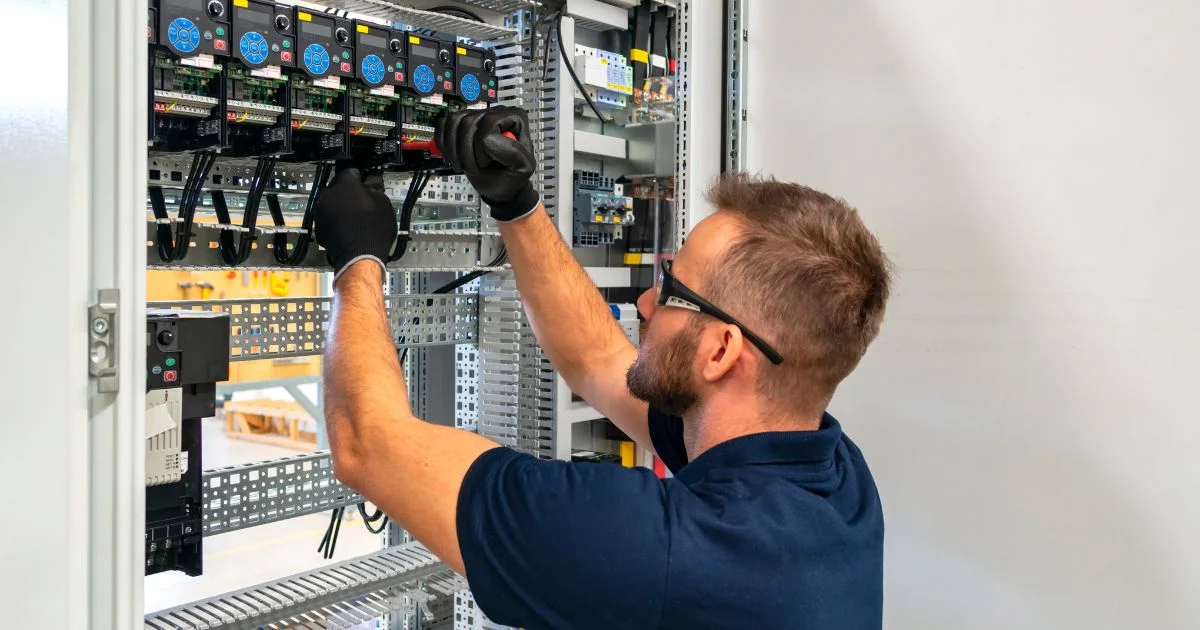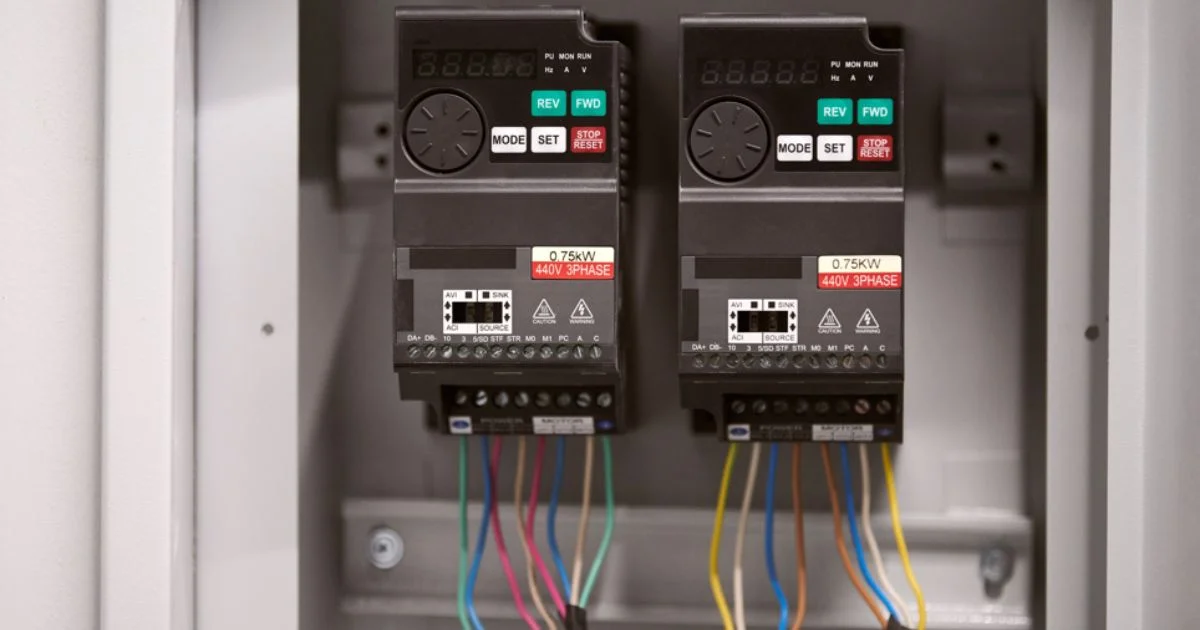
We collect basic website visitor information on this website and store it in cookies. We also utilize Google Analytics to track page view information to assist us in improving our website.

In tight enclosures and cost-sensitive applications, autotransformers can seem like the obvious choice. After all, they’re lighter, cheaper, and more compact than conventional transformers—so why not use them everywhere?
Because what you save in size and materials, you may give up in system safety and isolation.
Autotransformers use a single winding instead of two, which makes them efficient but also means there’s no electrical separation between input and output. That trade-off isn’t just theoretical. It has real implications for compliance, fault protection, and overall system performance.
This post explains what autotransformers are, where they work best, and where they don’t. Whether you're designing an industrial lighting system, a motor control panel, or a cost-conscious voltage step-down circuit, understanding their role could help you make a smarter decision.
An autotransformer uses a single winding with shared primary and secondary taps instead of separate windings. The input and output circuits share a common electrical connection through this single winding.
This design delivers lower weight, cost, and footprint compared to conventional two-winding transformers. The shared winding means less copper, which translates to better efficiency and reduced material costs.
Autotransformers work for both step-up and step-down applications. The tap positioning determines your voltage ratio; you're not limited to stepping down voltage like some engineers assume.
Slim Line LED autotransformers handle 347V and 480V industrial lighting systems efficiently. These units fit efficiently into tight electrical panels, making them ideal for LED retrofit applications where space is limited.
Slim Line autotransformers from Electronic Craftsmen are commonly selected in lighting designs that prioritize space savings and performance over isolation. The voltage conversion they provide supports modern LED drivers without the need for custom enclosure modifications.
The biggest difference? No galvanic isolation. Your input and output circuits share a direct electrical connection through the common winding.
Conventional transformers transfer power through magnetic coupling between separate windings. If the primary winding fails, your secondary circuit stays electrically isolated. With autotransformers, a winding failure can put full input voltage on your output circuit.
Lower impedance gives autotransformers better voltage regulation under varying loads. That's great for motor applications where voltage stability matters.
But that same low impedance means less fault protection. High circulating currents can develop if system faults occur, potentially causing more damage than isolated transformer designs.
Slim Line autotransformers from Electronic Craftsmen are often chosen in lighting designs where form factor and efficiency outweigh the need for isolation. The compact design fits standard electrical enclosures without custom modifications.
Industrial lighting and HVAC control panels represent prime autotransformer applications. The voltage ratios typically stay reasonable (480V to 277V or 240V), and the electrical systems already handle multiple voltage levels safely.
Motor soft-start systems benefit from autotransformer designs. Variable autotransformers provide smooth voltage ramp-up that reduces starting current surges and mechanical stress on motor systems.
3-phase voltage correction in factory automation often uses autotransformer configurations. When your supply voltage runs consistently high or low, buck-boost autotransformers provide precise correction without the cost and size penalties of isolation transformers.
Low-voltage battery charging systems work well with autotransformer designs, especially where space constraints matter more than isolation requirements.

Compact enclosures where every cubic inch matters
Low differential voltages like 480V to 240V ratios
Systems with external protection schemes that handle fault conditions properly
The efficiency advantage becomes more significant in higher-power applications. A 50kVA autotransformer might run 3-4% more efficient than an equivalent isolation transformer—that's real energy savings over time.
Medical equipment applications require galvanic isolation for patient safety. That shared neutral connection in autotransformers creates unacceptable risk in healthcare environments.
Avionics and aerospace systems typically mandate isolation transformers. The fault conditions in aircraft electrical systems make isolation a critical safety requirement.
Signal integrity applications need the noise isolation that only magnetic coupling provides. Autotransformers can't block high-frequency noise the way isolated transformer designs do.
Systems prone to surges or unbalanced loads create dangerous conditions with autotransformer designs. Lightning strikes or equipment failures can put hazardous voltages where they don't belong. See how core material choices impact thermal limits and surge performance.
"Autotransformers are just cheaper transformers."
That's not accurate. They serve a completely different engineering function. You're trading isolation for efficiency and size—not just saving money. Understanding this trade-off prevents costly specification mistakes.
Tap positioning affects voltage drop under load. Calculate your actual load current and factor in winding resistance when determining tap locations.
Thermal hotspots develop in compact autotransformer builds. The shared winding carries both primary and secondary currents in some sections, creating higher heat generation than conventional designs.
Fault current mitigation requires careful planning. External fusing, surge protection, and ground fault detection become more critical when you lose the inherent protection of galvanic isolation.
Class insulation and winding material selection matter more in compact builds. Higher operating temperatures in small enclosures demand better insulation systems.
Corona testing becomes essential for high-voltage autotransformer applications. Partial discharge can develop at tap connections if insulation systems aren't properly designed.
Electronic Craftsmen supports custom winding configurations and insulation systems rated to 220°C—helpful for compact autotransformer builds that run warm.
The isolation concern creates higher risk if system faults aren't properly mitigated. You need robust external protection that accounts for the shared neutral connection.
UL and CSA standards allow autotransformer use in specific applications, but requirements are stricter than for isolation transformers. Understanding these compliance differences prevents project delays.
Partial discharge and dielectric strength testing become critical in autotransformer applications. The tap connections and shared winding create potential failure points that need thorough evaluation.
External circuit protection and ground fault detection aren't optional—they're essential safety measures. The protection scheme becomes part of the transformer system design.
Why does experience matter? Tap accuracy, insulation class selection, and thermal simulation require deep engineering knowledge that comes from years of custom builds.
A comprehensive design library enables quick turnaround for common voltage requirements like 277V, 347V, and 480V systems. Standard configurations speed project timelines while maintaining custom performance.
Hybrid builds combine autotransformers with current sensing or other functions in compact assemblies. These integrated solutions solve multiple design challenges simultaneously.
In multi-voltage systems, some teams integrate autotransformers with additional magnetic components—like current sensors, filtering coils, or thermal protection windings—into a single compact assembly. These hybrid units reduce overall component count, simplify wiring, and save space inside crowded electrical panels.
They’re especially useful in retrofit environments or modular systems where real estate is limited. With proper shielding and thermal design, these assemblies can maintain compliance while streamlining installation and maintenance.
Teams building for building systems and industrial controls often rely on Electronic Craftsmen for slim-profile autotransformer assemblies that integrate seamlessly into multi-voltage environments.
The manufacturing capabilities matter too. Precision winding machines ensure tap accuracy, while vacuum encapsulation systems provide reliable insulation in compact form factors.
Autotransformers are efficient and compact solutions, but they're not universal answers to every voltage conversion challenge.
Always consider system-level risks: fault conditions, compliance requirements, and isolation needs. The shared neutral connection that makes them efficient also creates responsibilities you can’t ignore.
When used correctly, they save space, cost, and material while delivering excellent performance. The key is matching the technology to applications where the trade-offs make sense.
Choosing the right magnetic component isn’t just a design but a strategic step. Whether you're building to meet inspection criteria, reduce BOM costs, or improve long-term efficiency, knowing when to apply autotransformer technology (and when to avoid it) helps prevent costly rework.
Have a design in mind or working through constraints? Talk to us about whether an autotransformer fit—and how to make it work for your specs.
Even if your project doesn’t call for autotransformers today, understanding how they work helps you evaluate trade-offs across your entire system. You might use isolation in one part of the design and autotransformers elsewhere to save space or cost.
This kind of mixed strategy is common in industrial and commercial projects where budget, safety, and layout compete for priority. The more complex the system, the more important it is to work with a supplier who can tailor magnetic solutions to your entire architecture—not just a single part number.

